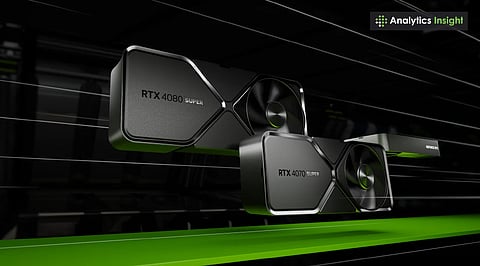

The best GPUs for VR gaming in 2025 offer high FPS, large VRAM, and support for modern VR headsets.
VR performance depends not only on the GPU but also on the CPU, display refresh rate, and system latency.
Some budget options offer a decent VR experience, while premium GPUs provide the necessary headroom for demanding titles.
Virtual reality gaming has made a tremendous leap forward, and one of its most remarkable aspects is the immersion that transports the player into this dynamic world. To fully exaggerate the experiences, a mighty GPU is a must.
There are a handful of highly upgraded graphics cards that rank at the top of the lists, all thanks to their exceptional performance, VR compatibility, and competitive pricing. Whether you are a casual gamer or a VR enthusiast, a high-performing GPU will instantly enhance the gaming experience.
This GPU delivers incredible performance at the 1080p level of VR gaming, providing smooth frame rates and aiding in ray tracing, making RTX 3050 an excellent choice for realistic experiences.
Specifications:
VRAM: 8GB GDDR6
Base/Boost Clock: 1530 MHz / 1777 MHz
Ports: 1x HDMI 2.1, 3x DisplayPort 1.4a
Cooling: Dual-fan design
Power Consumption: 130W
The card is well-known for its longevity and highly effective cooling system, which ensures consistent performance during prolonged use and minimizes the risk of thermal throttling.
Specifications:
VRAM: 8GB GDDR6
Base/Boost Clock: 1530 MHz / 1777 MHz
Ports: 1x HDMI 2.1, 3x DisplayPort 1.4a
Cooling: Dual-fan design
Power Consumption: 130W
RX 7600 is a graphics card that offers outstanding performance at a very reasonable price. Thus, this Sapphire Plus graphics card is a good investment for gamers who play in 1440p VR quality, and it also supports AMD's FidelityFX Super Resolution for enhanced visuals.
Specifications:
VRAM: 8GB GDDR6
Base/Boost Clock: 1320 MHz / 2500 MHz
Ports: 1x HDMI 2.1, 3x DisplayPort 1.4
Cooling: Dual-fan design
Power Consumption: 165W
RX 580, a budget-friendly option, excels at providing moderate performance for 1080p VR gaming, making this Asus graphics card a good introduction for inexperienced VR users.
Specifications:
VRAM: 8GB GDDR5
Base/Boost Clock: 1257 MHz / 1340 MHz
Ports: 1x HDMI 2.0, 1x DisplayPort 1.4, 1x DVI-D
Cooling: Dual-fan design
Power Consumption: 185W
Also Read: NVIDIA vs AMD Graphics Cards: Which GPU Should You Pick?
Selecting a VR-ready graphics card is crucial for an optimal VR gaming experience. To achieve smooth VR gameplay at 1080p, a pro gamer can rely on MSI GeForce RTX 3050 Ventus 2X E OC or ASUS Dual GeForce RTX 3050 OC. For 1440p VR gaming, Sapphire Pulse RX 7600 with 8GB is the top choice in terms of frame rates.
For those on a tight budget, ASUS DUAL-RX580-8G is a perfect choice as a beginner-level option. Always consider the combination of GPU, graphics cards for VR headsets, resolution, and budget for a pro-level experience.
1. Is ray tracing crucial for VR gaming?
Ray tracing enhances visual fidelity, whereas VR prioritizes frame rate.
2. What's the amount of VRAM I need for VR gaming?
8GB of VRAM is sufficient for general 1080p VR gaming, but 12GB+ of VRAM is strongly recommended for higher resolutions.
3. Can I use these GPUs with all VR headsets?
Most modern GPUs work great with some headset options for VR Gaming. Typically, all you need to be mindful of is the connections the GPU has (HDMI/DisplayPort) and whether it meets the minimum headset requirements.
4. Do I need a powerful CPU for VR gaming?
Yes, having a balanced CPU/GPU can ensure smooth VR performance; make sure your CPU is comparable to your chosen GPU.
